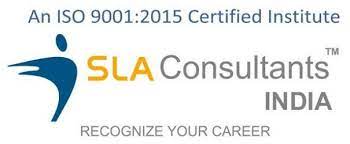Advanced Oracle DBA free videos and free material uploaded by SLA Consultants Gurgaon Training Institute staff .
Module 1 – Oracle 11g R2 Grid
Infrastructure Concepts
What is a Cluster
Grid Foundation Components
Oracle Clusterware Architecture
Oracle Clusterware Software and
Storage
Describe ASM Architecture
Creating and Managing ASM Disk
Groups
Creating and Managing ASM Cluster
File systems
Administering Oracle Clusterware
Troubleshooting Oracle Clusterware
Module 2 – Grid Infrastructure
Installation and Configuration
Hardware Requirements
Network Requirements
Software Requirements
DNS and DHCP Configuration
Grid Plug and Play Considerations
Single Client Access Names
Post installation tasks
Module 3 – Oracle Automatic
Storage Management concepts
ASM Instance
ASM Disks
ASM Disk Groups
ASM Redundancy
Module 4 – Cluster installation
Prerequisite for Oracle 11g R2 RAC
Linux OS Software Installation
Create OS Group and User Accounts
Networking
Synchronizing the Time on ALL
Nodes
Configuring Kernel Parameters
Set shell limits for the oracle
& grid user
Create the Oracle Inventory
Directory
Creating the Oracle Grid
Infrastructure Home Directory
Creating the Oracle Base Directory
Creating the Oracle RDBMS Home
Directory
Stage the Oracle Software
Check OS Software Requirements
Cluster Verification Utility
Module 5 – Shared Storage
Configuration
Types of Shared Storage
Partition the Shared Disks
Installing and Configuring ASMLib
Using ASMLib to Mark the Shared
Disks as Candidate Disks
Module 6 – Oracle 11g Grid
Infrastructure Installation
Basic/Advanced Grid Infrastructure
Install (without GNS and IPMI)…
Grid Infrastructure Home Patching
RDBMS Software Install
Run ASMCA to create diskgroups
Module 7 – Oracle 11g R2 RAC
Database Software Installation
Installing The Oracle Database Software
Creating A Cluster Database
Post database Creation Tasks
Module 8 – Administering Oracle
Clusterware
Managing Clusterware with
Enterprise Manager
Determining the Location of the
Oracle Clusterware Configuration Files
Backing Up and Recovering the Voting
Disk
Adding, Deleting, or Migrating
Voting Disks
Locating the OCR Automatic Backups
Oracle Local Registry
Migrating OCR Locations to ASM
Managing Network Settings
Managing Oracle Clusterware
Module 9 – Administering ASM
Instances
ASM Initialization Parameters
Adjusting ASM Instance Parameters
in SPFILEs
Starting and Stopping ASM
Instances Using srvctl
Starting and Stopping ASM
Instances Using ASMCA and ASMCMD
Starting and Stopping ASM
Instances Containing Cluster Files
Starting and Stopping the ASM
Listener
Administering ASM Disk Groups
Creating and Deleting ASM Disk
Groups
ASM Disk Group Attributes
ASM Disk Group Maintenance Tasks
Viewing ASM Disk Statistics
Module 10 – Prerequisite Steps
for Extending a Cluster
Using addNode.sh to add a Node to
a Cluster
Rolling Patches and Rolling
Upgrades
Installing a Patchset with the OUI
Utility
Installing a Patch With The opatch
Utility
Module 11 – Cluster Node
Management
Add/Deleting the instance
Add the Node
Remove the Node
Single-Instance Conversion Using
rconfig
Single-Instance Conversion Using
DBCA
Module 12 – Troubleshooting
Oracle Clusterware
Oracle Clusterware Log Files
Gathering Log Files Using
diagcollection.pl
Component-level Debugging
RAC-Specific Wait Events, Global
Enqueues, and System Statistic
Implementing the Most Common RAC
Tuning Tips
Using the Cluster Database
Performance Pages
Using the Automatic Workload
Repository in RAC
Using Automatic Database
Diagnostic Monitor in RAC
Oracle Data Guard Training
Syllabus
Module 1 – Overview
What Is Oracle Data Guard?
Oracle Data Guard Architecture
Types of Standby Databases
Types of Services
Benefits of Implementing Oracle
Data Guard
Module 2 – Understanding the
Oracle Data Guard Architecture
Data Guard Redo Apply Architecture
Data Guard SQL Apply Architecture
Standby Database Modes
Module 3 – Configuring Data
Protection Modes
Maximum Protection
Maximum Availability
Maximum Performance
Comparisons
How to Set the Mode
Module 4 – Creating a Physical
Standby Database by Using SQL
Preparing the Primary Database
Setting Initialization Parameters
on the Primary Database
Backing Up the Primary Database
Creating a Control File for the
Standby Database
Setting Initialization Parameters
on the Standby Database
Setting Up the Environment to
Support the Standby Database
Starting the Physical Standby
Database
Performing Additional
Configuration Tasks
Module 5 – Creating a Logical
Standby Database by Using SQL
Preparing to Create a Logical
Standby Database
Creating a Physical Standby
Database
Preparing the Primary Database
Transitioning to a Logical Standby
Database
Opening the Logical Standby
Database
Verifying the Logical Standby
Database
Module 6 – Performing
Switchover and Failover
Choosing the Best Role Transition
Operation
Performing a Switchover by Using
SQL
Performing a Failover by Using SQL
The Advanced Oracle DBA Certification Training Program in Gurgaon/Gurugram is the most appropriate training course which provides hands-on expertise and in-depth knowledge of relational database management system, allowing the candidate to gain essential and industry oriented skills which would help them to secure a promising place in the market within a short span of time. The Oracle Database Training Courses well supported by extensive features such as Advanced Oracle DBA Practical Training and job placement support which certainly makes it over the program to invest time and money. Anyone with a graduate degree in IT field along with some expertise in Oracle database management system can pursue the Advanced Oracle DBA Certification Training. Therefore, if you want to become a professional database operator in the future then join our reliable and responsive Advanced Oracle DBA Training Course to ripen your progress.

- 0 Reviews
- 0 Students
- 92 Courses

Write a public review